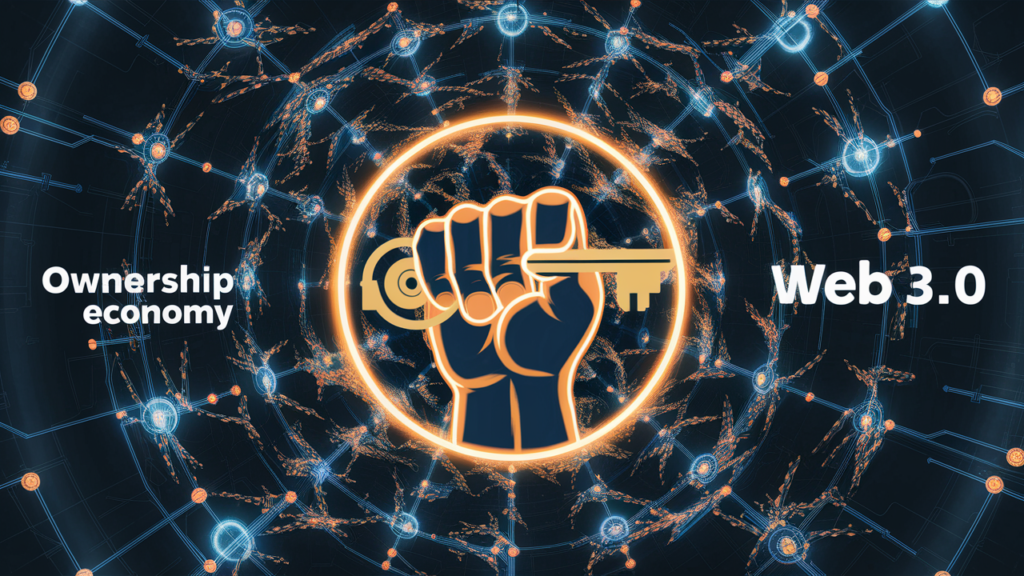How Do You Start With AI

Artificial Intelligence (AI) has become a ubiquitous term in today’s tech-driven world, but for those looking to embark on the AI journey, the question of where to start can be daunting. With the vast amount of information available, it is important to have a structured approach that ensures a solid foundation in this transformative technology.
In this discussion, we will explore the essential steps to begin your AI journey, from understanding the basics and identifying potential use cases, to building a foundation in data science and exploring AI tools and technologies. By following these steps, you will gain the knowledge and skills needed to navigate the world of AI and unlock its immense potential.
So, let’s dive into the world of AI and discover how you can take your first steps towards harnessing its power.

Key Takeaways
- Understanding AI: AI is a branch of computer science focused on creating systems that perform tasks requiring human intelligence. It can be categorized into three levels: Artificial Narrow Intelligence (ANI), Artificial General Intelligence (AGI), and Artificial Super Intelligence (ASI). Familiarity with programming languages like Python and R, as well as machine learning algorithms and frameworks, is important for AI development.
- Identifying AI Use Cases: To start with AI, it is crucial to identify areas where AI can streamline operations or decision-making. Analyze the availability and quality of data for training AI models, engage stakeholders to understand pain points and challenges, and evaluate the technical feasibility of implementing AI solutions. Prioritize use cases based on potential impact and alignment with strategic goals.
- Building a Foundation in Data Science: Acquire a solid understanding of data science fundamentals, familiarize yourself with programming languages like Python, gain knowledge of machine learning algorithms and frameworks, and enroll in online data science courses or programs. Practice data analysis, visualization, and interpretation to strengthen your skills in data science.
- Exploring AI Tools and Technologies: TensorFlow and PyTorch are popular open-source libraries for implementing AI models. AI tools like natural language processing (NLP) and computer vision enable advanced capabilities. Cloud platforms like AWS and Google Cloud offer AI services and infrastructure. Stay updated with the latest advancements in AI through research papers and online forums. Join AI communities to collaborate and learn from experts in the field.
Understanding the Basics of AI
Understanding the basics of AI is essential for anyone interested in exploring the field of artificial intelligence. AI, or artificial intelligence, is a branch of computer science that focuses on creating systems capable of performing tasks that typically require human intelligence. These tasks include understanding natural language, pattern recognition, decision-making, and learning from experience.
To start with AI, it is important to have a solid understanding of its fundamental concepts.
AI can be categorized into three levels based on capabilities. The first level is Artificial Narrow Intelligence (ANI), which refers to AI systems that are designed to perform specific tasks. These systems excel in a narrow domain, such as playing chess or driving a car.
The second level is Artificial General Intelligence (AGI), which represents AI systems that possess the ability to understand, learn, and apply knowledge across various domains, similar to human intelligence.
The final level is Artificial Super Intelligence (ASI), which refers to AI systems that surpass human intelligence in virtually every aspect.
To begin learning AI, it is crucial to have a foundation in programming languages such as Python and R. These languages are widely used in AI development and provide the necessary tools and libraries for implementing AI algorithms. Familiarizing oneself with machine learning algorithms and frameworks is also important. Machine learning is a subset of AI that focuses on algorithms and statistical models that enable systems to learn from and make predictions or decisions based on data.
There are numerous resources available for those looking to start their AI journey. Online platforms like Coursera, edX, and Udacity offer courses specifically tailored to AI and machine learning. Open-source libraries like TensorFlow and PyTorch provide a wealth of tools and resources for implementing AI models. Additionally, books, research papers, and online forums are excellent sources of information and community engagement.
Understanding the basics of AI is just the beginning of a fascinating journey into the world of artificial intelligence. By grasping the fundamental concepts and acquiring the necessary skills, individuals can embark on a path that leads to the development of intelligent systems capable of transforming industries, enhancing productivity, and improving the overall human experience.
Identifying Potential AI Use Cases
To effectively leverage the power of artificial intelligence (AI) within an organization, it is crucial to identify potential use cases that align with business objectives and can benefit from AI’s capabilities. Identifying these use cases involves a systematic approach that considers various factors such as business processes, data availability, stakeholder engagement, feasibility, and prioritization.
One way to identify potential AI use cases is by understanding the organization’s business processes. This involves identifying areas where human-like intelligence is required and where AI can streamline operations or decision-making. By pinpointing these areas, organizations can focus their AI efforts on tasks that can bring the most value.
Analyzing data availability is another crucial step in identifying AI use cases. Assessing the availability and quality of data that can be leveraged for training machine learning models is essential. Without sufficient and high-quality data, AI solutions may not deliver the desired results. Therefore, it is important to evaluate the data landscape before proceeding with AI implementation.
Engaging stakeholders is also essential in identifying AI use cases. Collaborating with different business units allows organizations to understand their pain points and challenges. By involving stakeholders early on, organizations can gain insights into how AI can effectively address these challenges and improve business processes.
Feasibility evaluation is another important aspect of identifying AI use cases. This involves determining the technical feasibility of implementing AI solutions in various business areas. It is crucial to assess whether the required technology and resources are available to support AI implementation.
Lastly, prioritizing use cases is necessary to ensure that AI efforts align with the organization’s strategic goals and resources. By prioritizing use cases based on their potential impact and value, organizations can allocate their AI resources effectively.
In summary, identifying potential AI use cases requires a systematic approach that considers factors such as business processes, data availability, stakeholder engagement, feasibility, and prioritization. By following this approach, organizations can identify the most suitable use cases for AI implementation and maximize the benefits of artificial intelligence.
| Steps | Considerations for Identifying AI Use Cases |
|---|---|
| 1 | Understand business processes: Identify areas where human-like intelligence is required and can streamline operations or decision-making within an organization. |
| 2 | Analyze data availability: Assess the availability and quality of data that can be leveraged for training AI models to solve specific business problems. |
| 3 | Engage stakeholders: Collaborate with different business units to understand their pain points and explore how AI can address their challenges effectively. |
| 4 | Evaluate feasibility: Determine the technical feasibility and potential impact of implementing AI solutions in various business areas. |
| 5 | Prioritize use cases: Prioritize AI use cases based on their potential to deliver significant value and align with the organization’s strategic goals and resources. |
Building a Foundation in Data Science
Foundational knowledge in data science is essential for professionals seeking to harness the power of data for analysis and decision-making. To build a strong foundation in data science, individuals should consider the following steps:
- Understand the Basics: Begin by acquiring a solid understanding of the fundamentals of data science and its applications across various fields and industries. This includes grasping concepts such as data collection, cleaning, and preprocessing.
- Learn Programming Languages: Familiarize yourself with programming languages like Python, which is widely used in data science for its versatility and extensive libraries. Python enables professionals to perform data analysis, visualization, and modeling efficiently.
- Study Machine Learning Algorithms: Gain knowledge of machine learning algorithms and frameworks to comprehend how data is utilized to make predictions and decisions. This involves understanding concepts such as supervised and unsupervised learning, as well as popular algorithms like linear regression, decision trees, and neural networks.
- Take Online Courses: Enroll in online data science courses or programs that offer comprehensive and practical knowledge in data analysis, visualization, and interpretation. These courses often cover topics like exploratory data analysis, statistical modeling, and data storytelling.
- Utilize Resources: Make the most of resources such as online platforms offering data science courses, open-source libraries, relevant books, and research papers. Engage in data science communities and participate in competitions to enhance your learning and network with peers.
Exploring AI Tools and Technologies
Exploring AI tools and technologies allows professionals to implement the foundational knowledge in data science acquired previously and delve into the practical applications of artificial intelligence (AI). AI encompasses a range of tasks, including natural language understanding, pattern recognition, decision-making, and experiential learning. To explore AI tools and technologies, it is essential to understand the subfields and their unique objectives and specializations.
One key aspect of AI is machine learning (ML), which involves training algorithms to learn from data and make predictions or decisions. ML techniques can be categorized into various types, such as supervised learning, unsupervised learning, and reinforcement learning. Deep learning algorithms, a subset of ML, are particularly effective in handling complex tasks such as computer vision and natural language processing (NLP).
Deep learning models, often based on artificial neural networks (ANNs), have achieved remarkable success in a variety of AI applications. ANNs are designed to simulate the structure and functionality of the human brain, enabling them to process and analyze large amounts of data efficiently. They are particularly effective in tasks such as image recognition, speech recognition, and natural language understanding.
AI tools and technologies also include frameworks and libraries that simplify the development process. Popular AI frameworks like TensorFlow and PyTorch provide a wide range of functionalities, making it easier to build and train AI models. These frameworks support the implementation of deep learning algorithms and facilitate the deployment of AI solutions.
Developing an AI Strategy for Your Business
Developing an effective AI strategy is crucial for businesses looking to leverage the potential of artificial intelligence in improving operational efficiency, decision-making processes, and customer interactions. To develop an AI strategy for your business, consider the following steps:
- Understand the potential applications of AI in your specific industry and business operations. Explore how AI can be used to automate repetitive tasks, analyze large amounts of data, and make predictions or recommendations.
- Identify the key areas where AI can improve efficiency, decision-making, and customer interaction within your organization. This could include optimizing supply chain management, personalizing customer experiences, or enhancing fraud detection.
- Evaluate the resources and expertise required to implement AI. Assess the availability of data, the need for specialized talent, and the necessary technology infrastructure to support AI initiatives.
- Create a roadmap for integrating AI into your business processes. Start with small pilot projects to test the feasibility and impact of AI applications. Collect and analyze relevant data to train AI models and ensure they align with your business goals.
- Continuously monitor and adapt your AI strategy based on feedback, technological advancements, and evolving business needs. Stay updated with the latest developments in AI and explore opportunities for further optimization and innovation.
Frequently Asked Questions
How Do I Get Started With Ai?
To get started with AI, it is important to understand the basics of AI and its applications. This includes concepts like natural language processing and pattern recognition.
Learning programming languages like Python and R is crucial for AI development. Familiarizing oneself with machine learning algorithms and frameworks is also important.
Exploring AI courses, joining AI communities, and participating in AI competitions can provide practical knowledge and hands-on experience.
Utilizing online platforms like Coursera, edX, and Udacity for AI courses is recommended. Leveraging open-source libraries like TensorFlow and PyTorch can also be helpful.
Additionally, it is important to consider the potential applications of AI in business. This includes areas like customer service, data analysis, and automation. Understanding the real-world impact of AI can provide insight into its value and potential.
What Is the First Step to Ai?
The first step to AI is to understand the basics of AI and its applications.
This involves familiarizing oneself with programming languages like Python and R, commonly used in AI development.
Additionally, gaining knowledge about machine learning algorithms and frameworks is crucial.
Online courses or AI-related programs can provide practical knowledge and joining AI communities, attending conferences, and participating in AI competitions can enhance networking and skills.
These steps lay the foundation for a successful start in the field of AI.
How Can I Learn AI Myself?
To learn AI independently, it is important to start with a strong foundation in the basics of AI, including its applications and subfields. Learning programming languages like Python and R, which are commonly used in AI development, is essential.
Familiarizing oneself with machine learning algorithms and frameworks is also crucial. Taking advantage of online courses, AI-related programs, and joining AI communities for networking and skill enhancement are recommended.
Continuous learning through attending conferences and participating in AI competitions can further enhance knowledge and expertise in AI.
How Do I Get Started With AI in 2024?
To get started with AI in 2024, it is recommended to follow a structured curriculum such as Microsoft’s 12-week program. This curriculum covers various aspects of AI, including Symbolic AI, Neural Networks, Computer Vision, and Natural Language Processing.
It is designed for beginners and includes hands-on lessons, quizzes, and labs to enhance learning. The curriculum also covers popular AI frameworks like TensorFlow and PyTorch, as well as ethical AI principles.
Additionally, there are additional resources and support available, such as a student hub page and a community of Microsoft Student Learn ambassadors.
Conclusion
In conclusion, starting with AI requires a structured approach that encompasses understanding the basics of AI, identifying potential use cases, building a foundation in data science, exploring AI tools and technologies, and developing an AI strategy for business.
Microsoft’s 12-week program offers a comprehensive curriculum that covers these essential aspects and provides hands-on learning opportunities.
By following this program, individuals can gain a solid foundation in AI and develop practical skills to navigate the vast landscape of artificial intelligence.








Responses